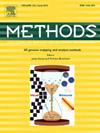SpaInGNN:基于精炼图神经网络的空间转录组学增强聚类和整合。
IF 4.2
3区 生物学
Q1 BIOCHEMICAL RESEARCH METHODS
引用次数: 0
摘要
空间转录组学(ST)技术的最新发展显著提高了全面描述组织微环境中基因表达模式的能力,同时保留了空间背景。然而,在单细胞水平识别空间域仍然是阐明生物过程的重大挑战。为了解决这个问题,我们开发了一种复杂的图神经网络(GNN)框架--SpaInGNN,它通过将空间位置数据、组织学信息和基因表达谱整合到低维潜在嵌入中来精确划分空间域。此外,为了充分利用空间坐标数据,使用图神经网络的空间整合(SpaInGNN)在对基因表达谱进行预聚类后,通过结合组织图像距离和欧氏距离,完善了为空间位置构建的图。然后,使用自监督 GNN 嵌入这一细化图,从而最大限度地减少自重新配置损失。通过将 SpaInGNN 应用于多个连续组织切片的精炼图,本研究减轻了数据分析中批次效应的影响。所提出的方法大大提高了空间域识别的准确性,更忠实地再现了小鼠嗅球和人类外侧前额叶皮层样本的组织结构。本文章由计算机程序翻译,如有差异,请以英文原文为准。
SpaInGNN: Enhanced clustering and integration of spatial transcriptomics based on refined graph neural networks
Recent developments in spatial transcriptomics (ST) technology have markedly enhanced the proposed capacity to comprehensively characterize gene expression patterns within tissue microenvironments while crucially preserving spatial context. However, the identification of spatial domains at the single-cell level remains a significant challenge in elucidating biological processes. To address this, SpaInGNN was developed, a sophisticated graph neural network (GNN) framework that accurately delineates spatial domains by integrating spatial location data, histological information, and gene expression profiles into low-dimensional latent embeddings. Additionally, to fully leverage spatial coordinate data, spatial integration using graph neural network (SpaInGNN) refines the graph constructed for spatial locations by incorporating both tissue image distance and Euclidean distance, following a pre-clustering of gene expression profiles. This refined graph is then embedded using a self-supervised GNN, which minimizes self-reconfiguration loss. By applying SpaInGNN to refined graphs across multiple consecutive tissue slices, this study mitigates the impact of batch effects in data analysis. The proposed method demonstrates substantial improvements in the accuracy of spatial domain recognition, providing a more faithful representation of the tissue organization in both mouse olfactory bulb and human lateral prefrontal cortex samples.
求助全文
通过发布文献求助,成功后即可免费获取论文全文。
去求助
来源期刊

Methods
生物-生化研究方法
CiteScore
9.80
自引率
2.10%
发文量
222
审稿时长
11.3 weeks
期刊介绍:
Methods focuses on rapidly developing techniques in the experimental biological and medical sciences.
Each topical issue, organized by a guest editor who is an expert in the area covered, consists solely of invited quality articles by specialist authors, many of them reviews. Issues are devoted to specific technical approaches with emphasis on clear detailed descriptions of protocols that allow them to be reproduced easily. The background information provided enables researchers to understand the principles underlying the methods; other helpful sections include comparisons of alternative methods giving the advantages and disadvantages of particular methods, guidance on avoiding potential pitfalls, and suggestions for troubleshooting.
 求助内容:
求助内容: 应助结果提醒方式:
应助结果提醒方式:


